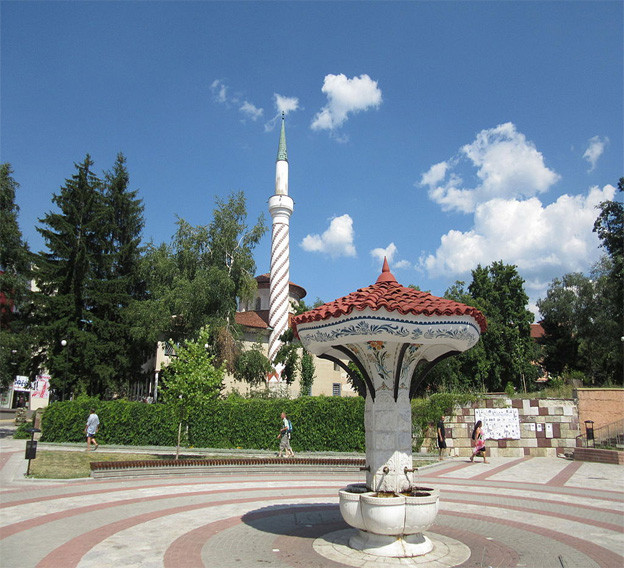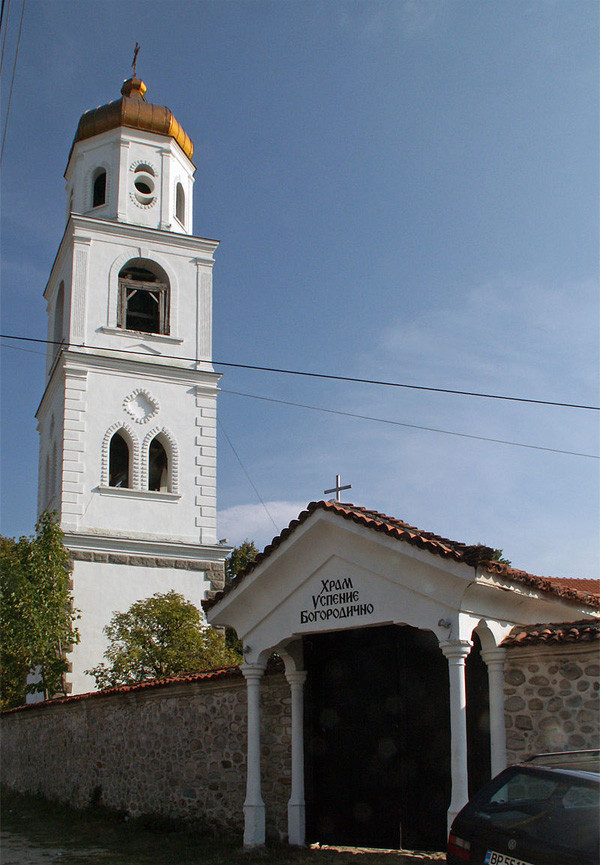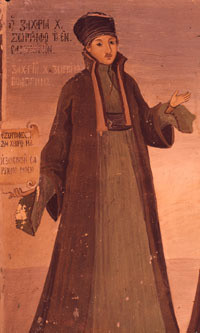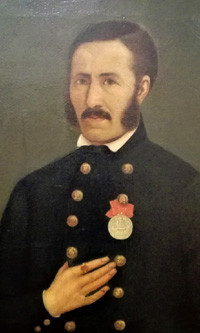The town of Samokov was known as the center of culture, enlightenment and famous icon-painters in the not so distant past. However, the development of this Bulgarian town was mainly boosted by iron ore mining that existed in the region since the middle of the 1st millennia BC. Iron was a precious material, because it did not rust and was used for the manufacture of anchors, various instruments and weapons. That is why it was an expensive product. Most of the male population in the region was engaged in its manufacture and received good incomes.
The money and the money turnover created conditions for development of spiritual culture and prosperity and multiple crafts, which predetermined the upsurge of this place, the Director of the Historical Museum in Samokov Veselin Hadzhigenov told Radio Bulgaria. The town of Samokov is situated on a crossroad, where several folklore groups mixed their culture and thinking.
 The religion also influenced the development of the region. More than 12 early Christian churches dating back to the 4th and the 5th century AD were discovered there. The town is also situated between large monastery centers in Bulgaria. In the 17th and the 18th centuries the Samokov region was part of the area of the so-called Sofia Mount Athos. The monastic brotherhood which built churches and monasteries in Vitosha, Plana, Verila and Rila mountains influenced the overall development of the region. The strong economic traditions and the Christian upsurge, which in times of Turkish Rule was the main instrument for preservation of faith and identity, helped this Bulgarian town become a spiritual and cultural center.
The religion also influenced the development of the region. More than 12 early Christian churches dating back to the 4th and the 5th century AD were discovered there. The town is also situated between large monastery centers in Bulgaria. In the 17th and the 18th centuries the Samokov region was part of the area of the so-called Sofia Mount Athos. The monastic brotherhood which built churches and monasteries in Vitosha, Plana, Verila and Rila mountains influenced the overall development of the region. The strong economic traditions and the Christian upsurge, which in times of Turkish Rule was the main instrument for preservation of faith and identity, helped this Bulgarian town become a spiritual and cultural center.
 Between 1557 and 1907 Samokov was a center of an Eparchy which played a significant role in the preservation of the Bulgarian language and spirit. The five existing churches date back to this period. The prosperity of the town predetermined the development of the educational work. The first enlighteners came to the town- Neophyte of Rila (Neofit Rislki), who was secretary of Bishop Ignatius, Grandma Nedelya Karaivanova-teacher and revolutionary, Zahari Krusha-author of educational and renaissance literature, Dimitar Blagoev-who contributed to the development of the reading and writing educational methodology.
Between 1557 and 1907 Samokov was a center of an Eparchy which played a significant role in the preservation of the Bulgarian language and spirit. The five existing churches date back to this period. The prosperity of the town predetermined the development of the educational work. The first enlighteners came to the town- Neophyte of Rila (Neofit Rislki), who was secretary of Bishop Ignatius, Grandma Nedelya Karaivanova-teacher and revolutionary, Zahari Krusha-author of educational and renaissance literature, Dimitar Blagoev-who contributed to the development of the reading and writing educational methodology.
 The Samokov Art School emerged at the end of the 18th century. It was founded by Hristo Dimitrov, father of the first artist who created secular painting-Zahari Gorgaf. Mihail Belstoynev (1858-1923) was Samokov’s last icon painter. Nearly 100 painters, mainly icon-painters, worked in this town in the course of 170 years. Their works are kept in Moscow, Mount Athos and Jerusalem.
The Samokov Art School emerged at the end of the 18th century. It was founded by Hristo Dimitrov, father of the first artist who created secular painting-Zahari Gorgaf. Mihail Belstoynev (1858-1923) was Samokov’s last icon painter. Nearly 100 painters, mainly icon-painters, worked in this town in the course of 170 years. Their works are kept in Moscow, Mount Athos and Jerusalem.
 Dospevski Family is another popular family of icon-painters. Stanislav Dospevski was the first artist with academic education. Ivan Obrazopisov who is the forefather of the Obrazopisov Family is author of the first portrait of national revival figure of 1829. The Samokov icon-painters travelled a lot and contacted with other artists and icon-painters. They worked in churches and monasteries in Serbia, Macedonia and Mount Athos. Part of the archives of Zahari Zograf and Nikola Obrazopisov containing notes of their working methods are kept at the Historical Museum in Samokov. Zahari Zograf used to buy Italian albums, in order to study the proportions and the anatomy of the human body, which proves that his interests went beyond the canons of icon-painting.
Dospevski Family is another popular family of icon-painters. Stanislav Dospevski was the first artist with academic education. Ivan Obrazopisov who is the forefather of the Obrazopisov Family is author of the first portrait of national revival figure of 1829. The Samokov icon-painters travelled a lot and contacted with other artists and icon-painters. They worked in churches and monasteries in Serbia, Macedonia and Mount Athos. Part of the archives of Zahari Zograf and Nikola Obrazopisov containing notes of their working methods are kept at the Historical Museum in Samokov. Zahari Zograf used to buy Italian albums, in order to study the proportions and the anatomy of the human body, which proves that his interests went beyond the canons of icon-painting.
Samakov is the town of the first printing house in Bulgaria.
In 1828 Nikola Karastoyanov bought a printing press from Serbia and imported it illegally in Bulgaria, Veselin Hadzhigenov explains. The official printing houses had permits from the Sultan. Some letters evidence that Nikola and his son Anastas tried to receive a permit from the Sultan, but they did not succeed. However, their published nearly 30 books and many icon prints. And if Nikola was the first professional printer, his son Anastas became the first professional photographer. He went to Serbia to do some printing work and learned the secrets of photography there. Later, he opened his own photo studios. He became a court photographer. Anastas is an author of the most popular photographs of famous activists and revolutionaries of the near past.
English version: Kostadin Atanasov
Photos: bg.wikipedia.org26 years ago, on 30 September, at the initiative of the Bulgarian Orthodox Church (BOC), a Pan-Orthodox Council was convened in Sofia to resolve the schism within the Bulgarian clergy . Then, despite the efforts of Patriarch Bartholomew of Istanbul to..
The head of a statue has been unearthed during excavations in the great canal of the ancient city of Heraclea Sintica located in Southwestern Bulgaria, close to the town of Petrich. The head longs to the statue that was discovered a few days ago..
From 23 to 28 September, Sofia and Vidin will host the 7th International Conference on the Roman Danubian Provinces on the theme "Frontier Landscapes along the Danube", reports BNR Vidin. The initiative was taken by the University of Ferrara, Italy...
The Days of Croatian Archaeological Heritage, which will last until 8 November, begin today at the National Archaeological Institute with Museum at the..

+359 2 9336 661
